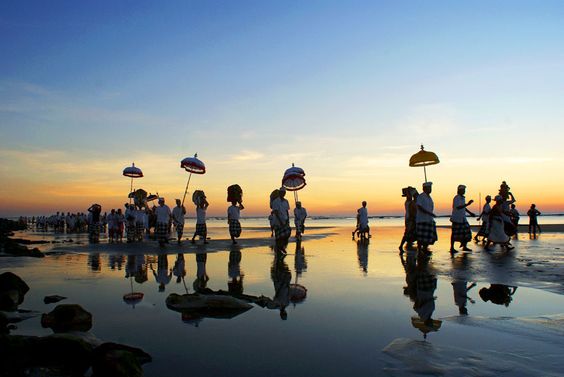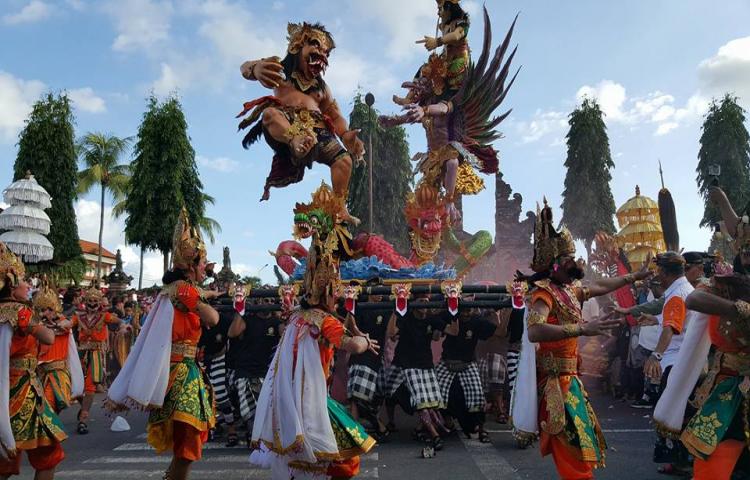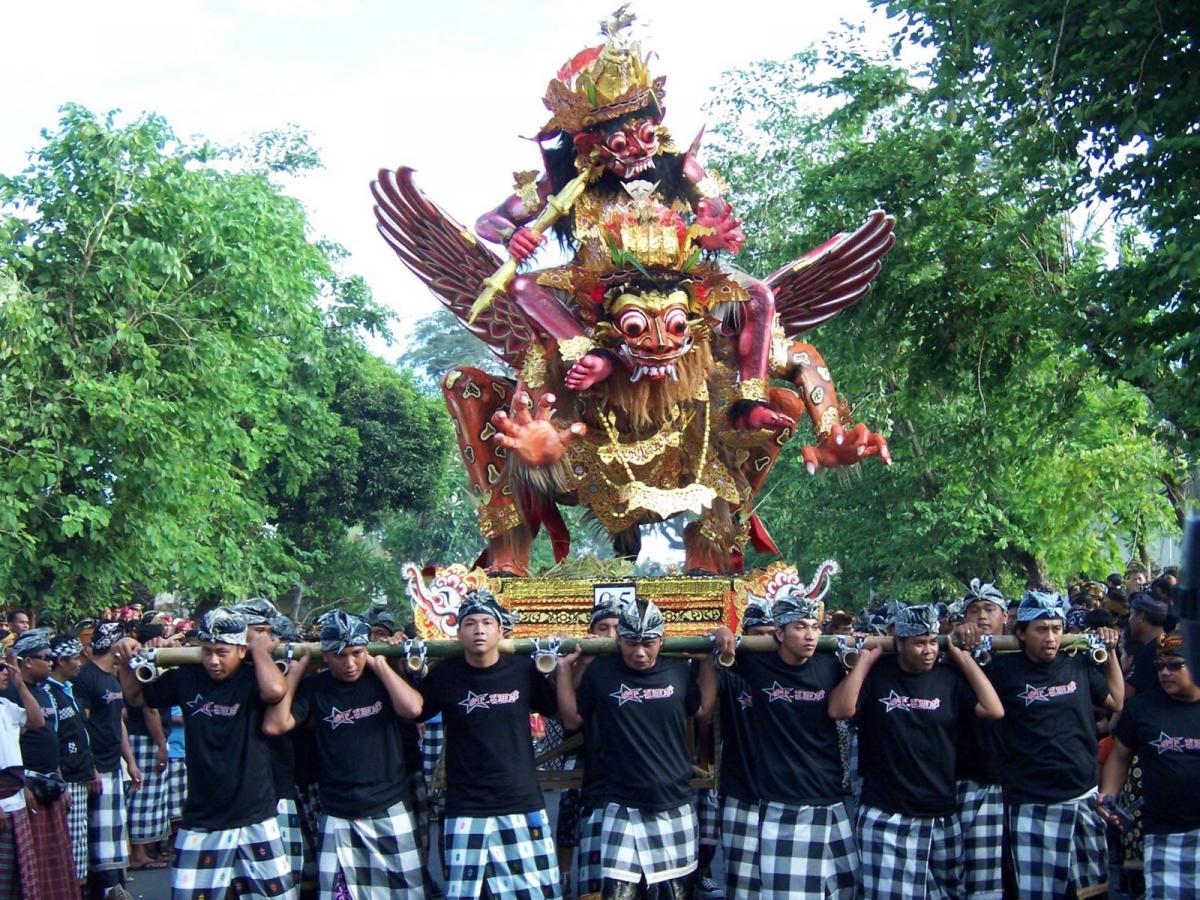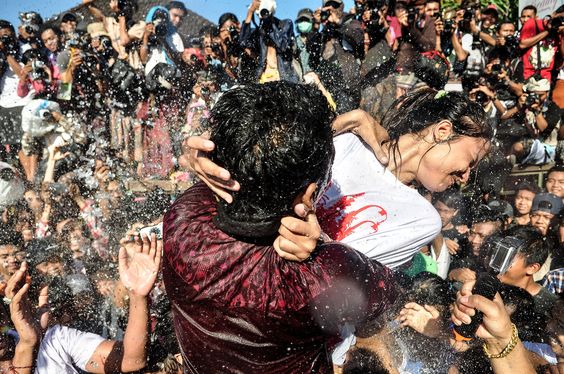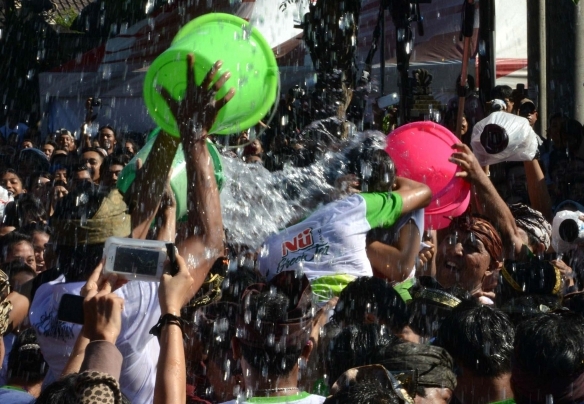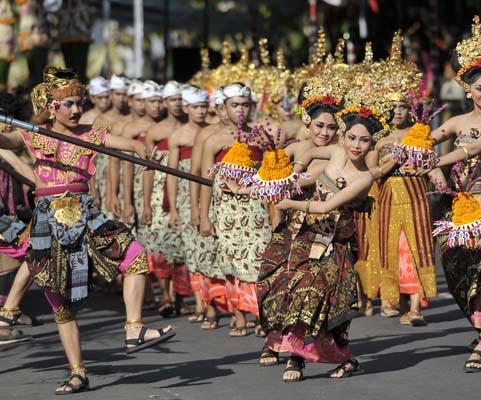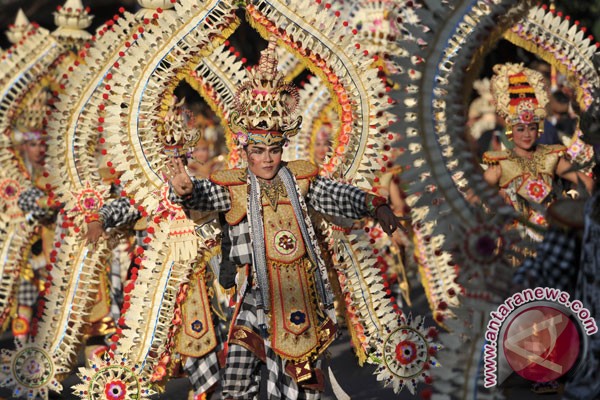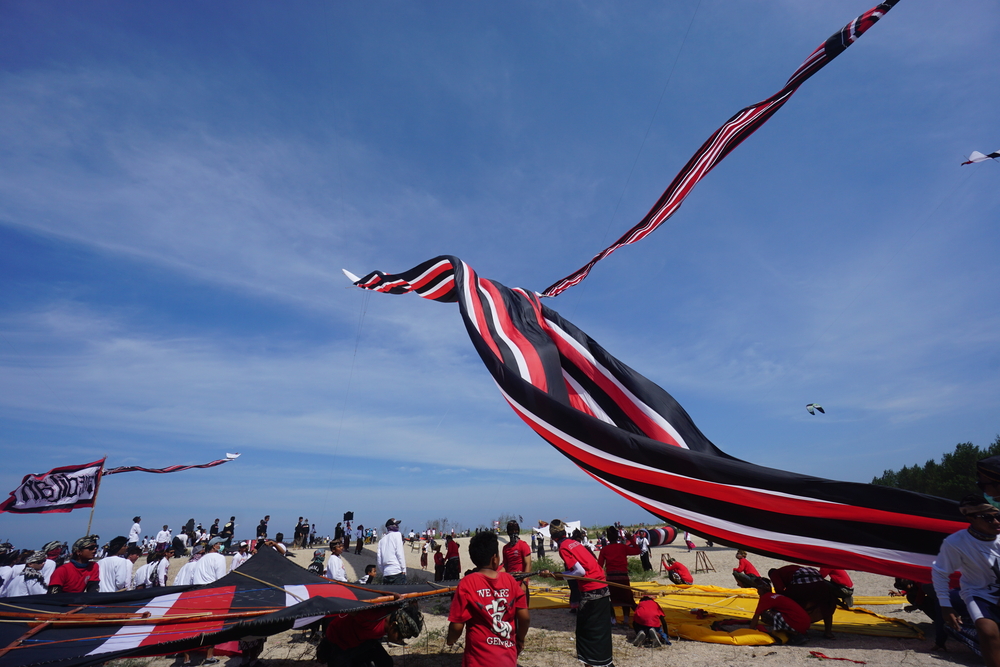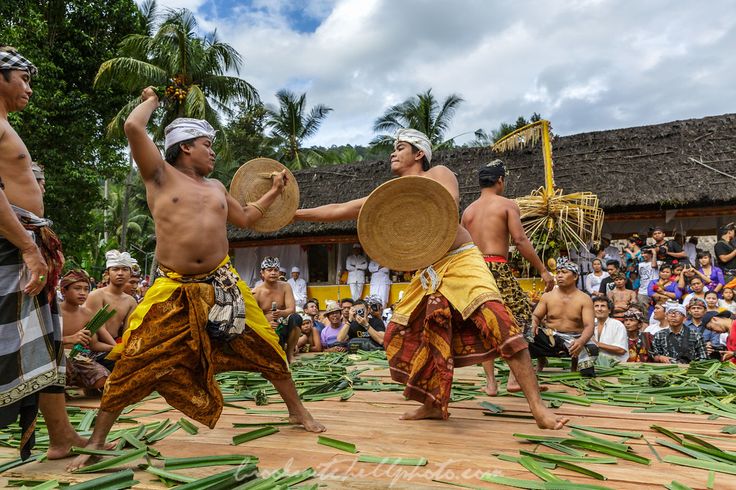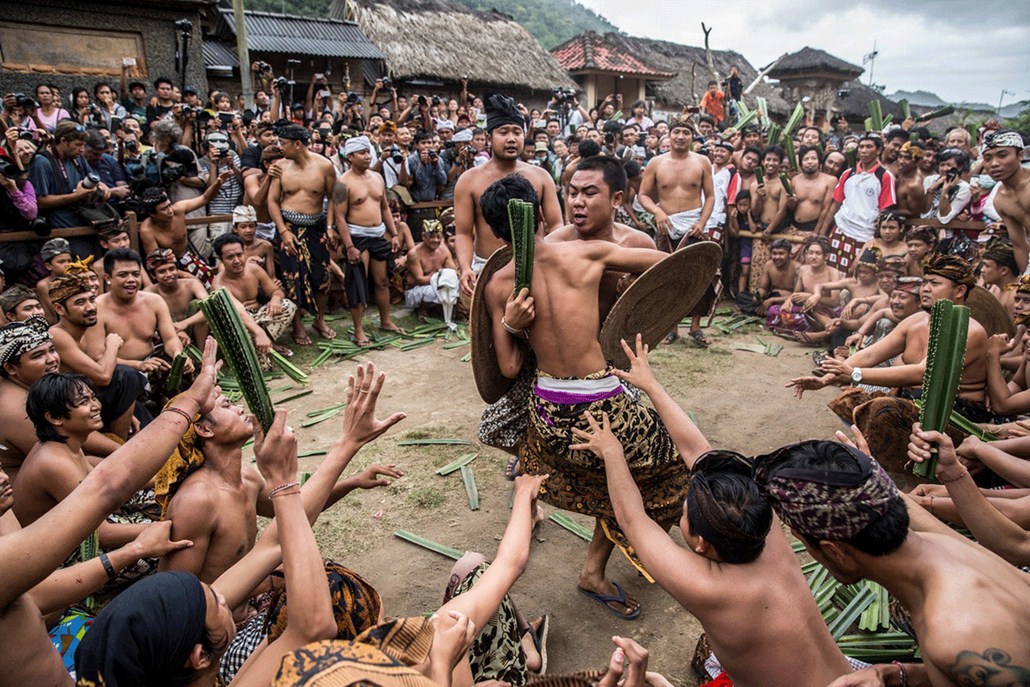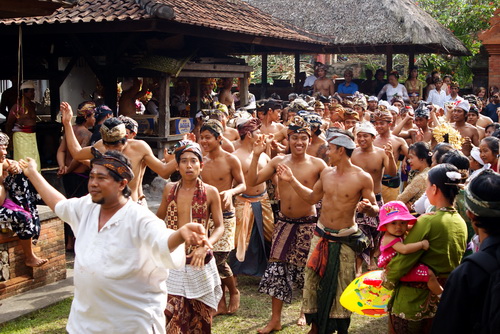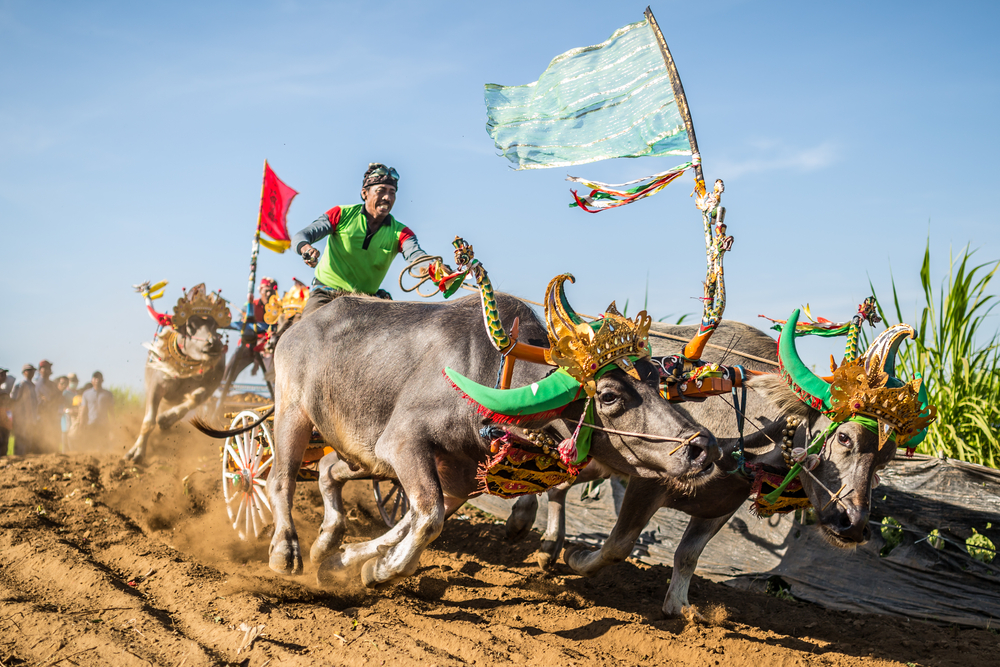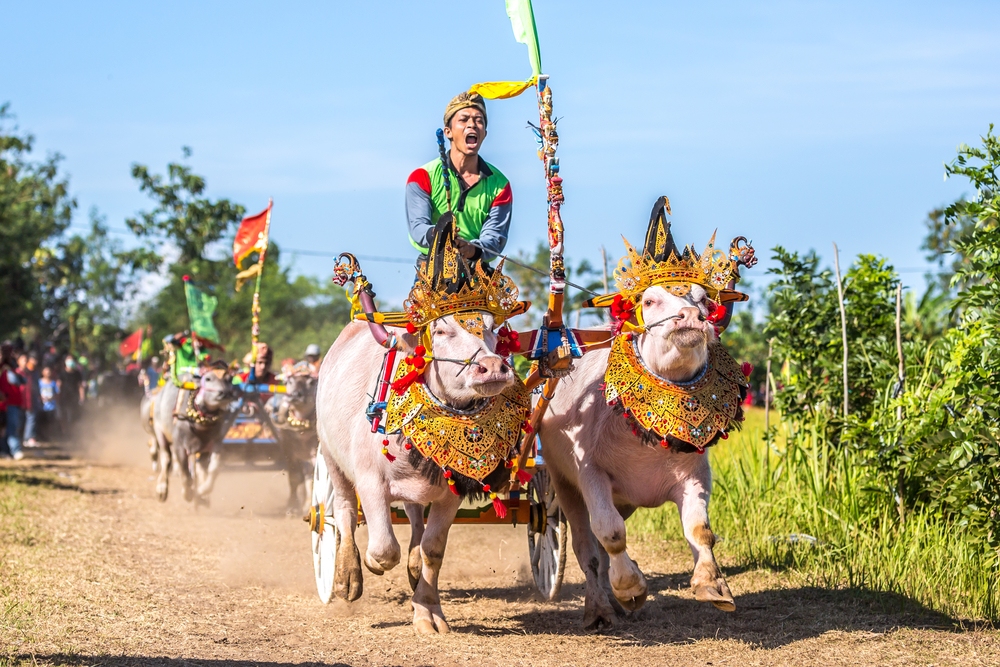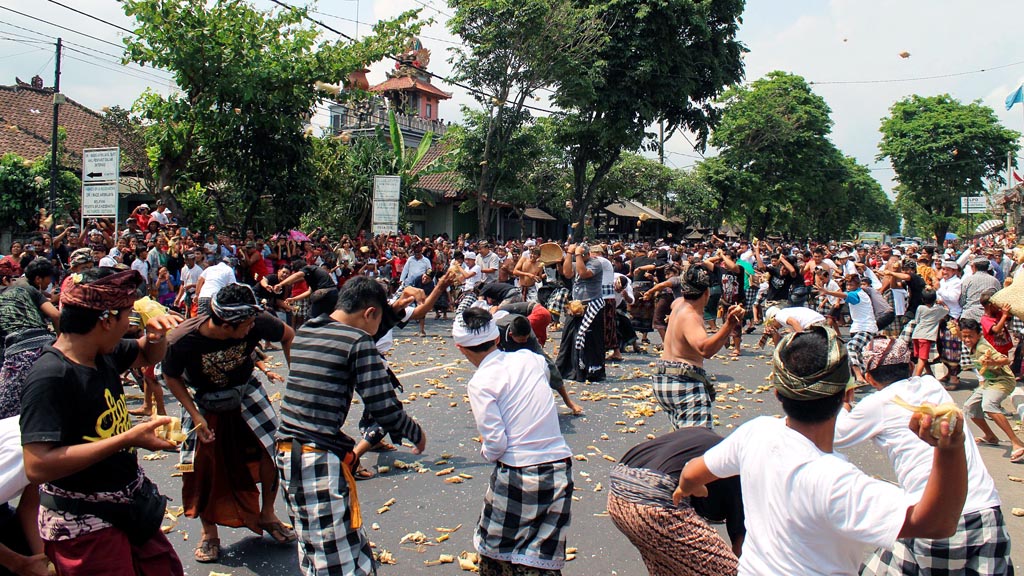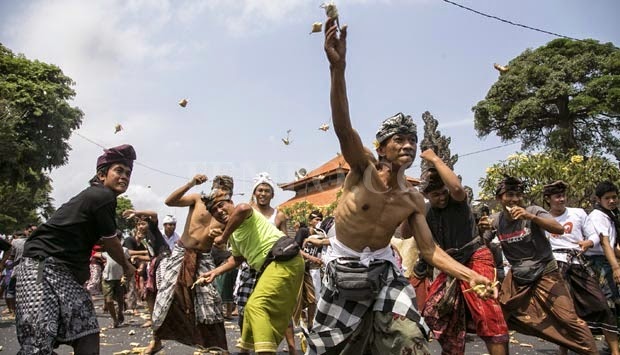There is no better way to immerse yourself in the Balinese culture than by attending some of the island’s colourful festivals, which is when the true spirit and traditions of Bali come alive. These important features in the social landscape are either determined by the Balinese calendar, or are scheduled to take place during specific months each year. The great thing is that you can time your holiday to coincide with these events.
Nyepi
Nyepi marks the Balinese Saka New Year, and the way in which it is celebrated is totally unique and something that you will never experience anywhere else in the world. This is the day when the whole island retreats into silence for 24 hours.
There will be no flights in or out of Bali on Nyepi Day, businesses will be closed, no one will be allowed out on the streets, no television programmes will be broadcast, and on this night of the dark moon, all lights (apart from limited lighting in hotels) must be extinguished. For the Balinese, the purpose of the day is to teach control of excess, the idea being to spend the day in quiet contemplation and meditation. Any demons and evils spirits will be deluded into thinking that Bali is deserted, prompting them to leave the island. The night before Nyepi, however, which is known as ‘Pengrupukan’, is anything but silent. After sunset, exciting torch-lit street processions take place, all over the island, as the evil spirits are driven away with gongs, drums, cymbals, firecrackers and huge, scary, highly-creative papier-mâché monsters called ‘ogoh-ogoh’, which are later ceremoniously burned.
Retrieved from kungkungkab.go.id
Retrieved from kompasiana.com
Omed-Omedan, Kissing Festival
Every year, one day after the Nyepi Day of Silence, the unmarried 17-to-30-year-old residents of Sesetan, near Denpasar, take part in a kissing ritual. Participants face each other on opposite sides of the main street, and at the signal from a priest, the males participants attempt to kiss the female participants, while other villagers pour buckets of water over them. The ritual, known as ‘Omed-Omedan’, which means pulling, represents the push and pull of positive and negative elements, and is believed to avert disaster.
Retrieved ayojelajahiindonesia.com
Retrieved from merdeka.com
Bali Arts Festival
The Bali Arts Festival is an annual fiesta of Balinese and Indonesian artistic traditions and culture. It last for a full month and is held at Bali Arts Centre, Taman Budaya, in Denpasar. The festival showcases daily cultural performances, dance dramas, theatre, traditional and modern music, historical exhibitions, classical palace dances, handicraft exhibitions, garment and jewellery exhibitions, puppet shows, competitions and other related cultural commercial activities, presented by every region in Bali and beyond. The opening parade takes place in mid-June with a procession of cultural treasures from all the regencies in Bali, starting from Puputan Margarana Square, Niti Mandala, Denpasar.
Retrieved from inbali.org
Retrieved from balibestdestination.com
Retrieved from antaranews.com
Bali Kite Festival
The Bali Kite Festival is held every year, usually between July and August, when the winds are strong. Dates are determined in accordance with favourable conditions. The Festival takes place at Padanggalak, near Sanur, and is actually a seasonal religious festival intended to send a message to the gods for abundant crops and harvests. Traditional giant kites, up to 4 x 10 metres in size, are made and flown competitively by teams from different villages.
Mekare-Kare
The Mekare-Kare is an annual theatrical fight, which takes place in June or July between the young men of the village of Tenganan, near Candidasa, utilising prickly pandanus leaf whips. Each dual is staged to the intense martial sounds of ‘gamelan selonding’ music, and lasts only a few seconds, accompanied by much merriment and laughter. The attacks are warded off with tightly woven ‘ata’ vine shields; there are no winners and no losers because the objective is to draw blood as an offering to the gods. During the Festival, the women of the village wear the famous hand-woven ‘Geringsing’ double ikat textile, and on the first day, the unmarried maidens ride creaky wooden ferris wheels, which are manually operated by the men. The turning symbolises the descent of the sun to the earth.
Retrieved from brookmitchell.com
Retrieved from topindonesiaholidays.com
Retrieved from jejakkamera.blogspot.co.id
Negara Buffalo Races
The famous buffalo races or ‘Makepung’ in Negara, West Bali, originated as a simple ploughing contest that was introduced by migrants from the island of Madura. The races, which are staged twice a month, every year between July and November, feature Bali’s sleekest, most handsome water buffaloes. Teams are divided into two clubs, from the eastern and western sides of the Ijo Gading River, and each race is comprised of two pairs of bulls running against each other at speeds of up to 60 kilometres per hour around an erratic 2-kilometre track. Each pair is hitched to a gaily painted wooden chariot, driven by a precariously-balanced whip-happy jockey. In the days leading up to the races, the bulls are fed up to 50 eggs per day; they are given herbal potions, massaged and sung to sleep.
Mekotekan
Mekotekan is a purification ritual that takes place every 210 days in the tiny village of Munggu (located halfway between Canggu and Tanah Lot) as part of the Kuningan Festival. On this day, wearing traditional Balinese dress, the men of the village take to the streets brandishing long wooden poles, which they form into a pyramid. Cheered on by jovial participants and curious onlookers, friendly opponents then scale the structure, climbing to the peak for a face-off in reenactment of the ancient battles of the Blambagan war. Mekotekan has been a tradition of Munggu village since 1946.
Tipat War
Every full moon of the fourth month in the Balinese 210-day calendar, the bare-chested men of Kapal village celebrate the rice harvest by dividing into two opposing teams and throwing ‘tipat bantal’ rice cakes at each other. The rice cake war ends with a feast of the ammunition. Broken pieces of tipat cakes are later collected from the streets and buried in the fields for the prosperity of the village.
Retrieved from kompas.com
Retrieved from balimediainfo.com
Explore a unique island experience with us.

